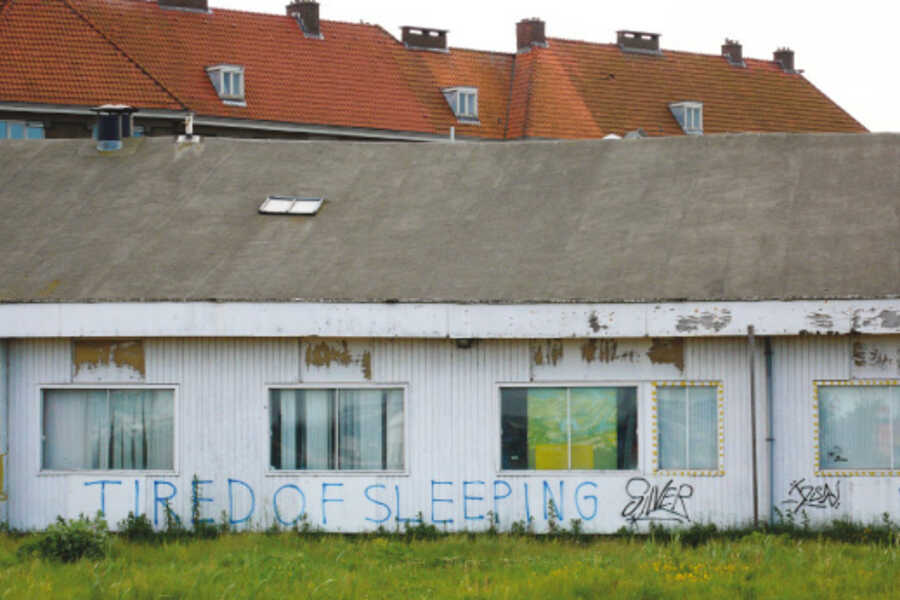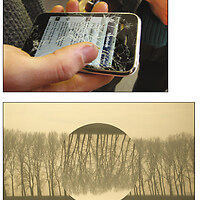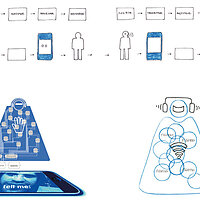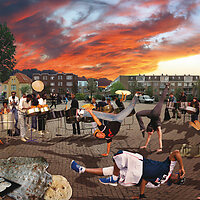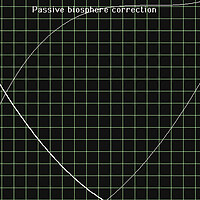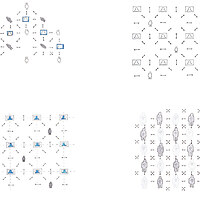People experience place in many ways and stories are, as it were, written on the walls. Others recognize these signs of presence before and include these stories in their own experience, leaving traces as well. Often, even, the story of a place is so powerful that people do not perceive the physicality of a place as it is.
In social networks and other Internet sites people share stories, and a sense of place emerges. But can we be witness to each other in these networked narrative landscapes, as we are witness to each other in the street?
It is striking that when mediating presence, almost all networks turn out to have glass interfaces. What is it that glass does that permits us to mediate our presence to other places? Glass is transparent. In houses it shields us from wind and cold and in networks it opens up the world. Above all, glass transmits light and light deeply affects our sense of place.
At night in the dark the ocean is a different place than when the sun is making the water sparkle in the day. Glass always has a refractive index, which defines how light travels through the glass, and how we see the world as consequence. Sharpened lenses can turn the world upside down. Glass consists of sand and some other chemicals and these define how colour is perceived. Whether the world will look greenish, or blue or grey. Visual conventions help us define how natural something looks, but when in need to communicate colour for example, screens cannot do the job. Again here we are dependent on making references to a shared experience in a shared place for being able to communicate.
When being witness to each other, perception in mediated settings remains to be impoverished compared to meeting in real life. Shared strong experiences in real places provide solid references for inspiring communication and as result the potential quality of witnessing online improves.
Net works offer no distance and make no distinction
People see, hear and smell over distance and are capable of feeling connected when not even being in the same place. Through a letter, a phone call or during a Skype session people create spheres of togetherness. As a witness, one is not only part of an event; one witnesses an event as well. When telling a story, the storyteller and the listener are separated. To be witness includes taking a distance while being present in an event. In mediated communication the not sharing of the same place, is a given. But is this distance the kind of distance that a witness needs to be engaged?
Witnessing networks in real life negotiate distance continually. Some people are closer to each other than others. Specific conditions of trust increase proximity or they do not. Distance between different people weaves the social structure. Who witnesses whom and when and where with what result, is defined. Communities create ‘formats’ for having witnessed presence: when a child is born, when people get married, when work is celebrated, when people die and are mourned. Distinct places are an integral part of these formats. In a courtroom different positions of authority have distinct places in the space. A space for mourning is different than a space for celebration.
In social networks online distance is not perceivable nor is the experience of place profound. People connect to a network, enjoy each others contributions and engage. We can perceive the space between a body and a computer or other device we use, but not the space between participants in a network. The web of connections offers a sense of place, and with whomever is there we can connect, but social structures are more difficult to perceive. Because judging social situations online is more difficult, the potential ethical impact of one’s own actions is obscured. Witnessing when negotiating truth as in ‘clarity of perception’ and witnessing as in ‘ethical action’ are both not well defined anymore. Also negotiating trust becomes a challenge. One can decide to go with the flow, or not.
The ‘third witnessing’ perspective
When many people engage, when the flow is strong, emergence and self-organization define network dynamics. Unlike any other witness, networks can gather, aggregate and distribute data at great speed and scale in transparent ways. Also unlike any other witness, the network seems to be neutral.
When people engage online, they have a sense of authorship. Yet a feeling remains that one has some freedom to explore, without having to bear the consequences. One does not feel that one’s own contribution will make a difference. Witnessing between two people, or witnessing a situation of others interacting, is not as profound an experience as when being witness to such situations in real life.
The network offers a complete new witnessing perspective that was never available before. This ‘third witnessing’ perspective unfolds the rhythm and behaviour of all participants as a whole and potentially affects individual behaviour. For instance we can see how all the cars move and identify where traffic jams can be expected. As a result we can adapt our own trajectory. Such ‘alive information’, which changes all the time, is input for participatory systems. It allows effects of human behaviour to be identified real time and because this information is available to all who participate, this influences what people will do next. Dynamics in networks can be difficult to predict. When looking at the financial markets, no one can determine the flow. The phrase that is used again and again, is that people do not trust the market when it goes down and that trust is restored when the markets go up. To decide to jump in the f low is a matter of chance or ‘blind trust’. One cannot be certain how the flow will go. The third witnessing perspective includes all whom participate and addresses and responds to all who participate.
Between witnesses a sphere emerges, in which the possibility to act becomes manifest. Networks offer spheres that people are sensitive to and also include possibilities to act. When designing participatory systems, the third witnessing perspective is fundamental to its dynamics. The grand challenge is how the first and second witness perspective (me and you) can become part of these dynamics. How people can accept responsibility for words and deeds of their own self and other selves? How do people relate to each other in network environments?

